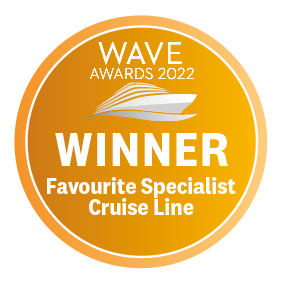In the Wake of the Great Explorers | Eastbound

Attempt a Northwest Passage crossing from the Pacific to the Atlantic
Leaving from:
Nome, Alaska
Cruise ship:
MS Roald Amundsen
Visiting:
Nome, Alaska •
Port Clarence, Alaska •
Point Barrow, Alaska •
Point Barrow, Alaska •
From
Price shown provided by:
HX Hurtigruten Expeditions
Hurtigruten Expeditions offers more than 125 years of cruising experience, providing small-ship exploration of more than 250 destinations across 30-plus countries.
On Hurtigruten Expeditions cruise adventures, you will be accompanied by a highly skilled crew and expedition team on one of nine intimately-scaled expedition ships, taking you on breathtaking nature-based experiences in remote corners of the world.
530
Passengers
2019
Launched
20889t
Tonnage
140m
Length
23.6m
Width
15kts
Speed
9
Decks
NOK
Currency
Cruise Itinerary
Day 1
Nome, Alaska, Alaska
Embark.
Day 2
Port Clarence, Alaska, Alaska
Days 4 - 4
Point Barrow, Alaska, Alaska
Disembark.
Day 6
Herschel Island, Yukon, Canada
Day 7
Smoking Hills, Northwest Territories, Canada
Day 8
Ulukhaktok, Northwest Territories, Canada
Day 9
Johansen Bay, Nunavut, Canada
Day 10
Cambridge Bay, Nunavut, Canada
Day 11
Gjoa Haven, Nunavut, Canada
Day 12
Pasley Bay, Nunavut, Canada
Day 13
Coningham Bay, Nunavut, Canada
Day 14
Prince Leopold Island, Nunavut, Canada
Day 14
Beechey Island, Nunavut, Canada
Day 14
Radstock Bay, Devon Island, Canada
Day 15
Croker Bay, Nunavut, Canada
Day 15
Dundas Harbour, Devon Island, Nunavut, Canada
Day 16
Pond Inlet, Nunavut, Canada
Day 18
Ilulissat (Jakobshavn), Greenland
Day 19
Sisimiut (Holsteinsborg), Greenland
Day 22
Red Bay, Newfoundland and Labrador, Canada
Day 23
Corner Brook, Newfoundland and Labrador, Canada
Day 25
Halifax, Nova Scotia, Canada
Disembark.
Ship Details

HX Hurtigruten Expeditions
MS Roald Amundsen
In 2019, Hurtigruten Expeditions added a brand new ship to its fleet: MS Roald Amundsen. The state-of-the-art vessel features new and environmentally sustainable hybrid technology that will reduce fuel consumption and show the world that hybrid propulsion on large ships is possible.

Cabins
All Prices


